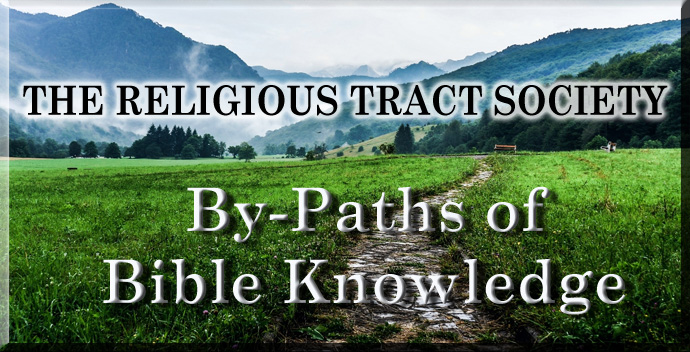
By-Paths of Bible Knowledge
Book # 5 - Galilee in the Time of Christ
Rev. Selah Merrill, D.D.
Chapter 1
|
INTRODUCTORY. The fact is sometimes overlooked that a Divine revelation implies history, and that history implies locality. Hence a familiar acquaintance with its locality and history would seem to be necessary, if one would fully appreciate and understand such a revelation, whether it comprises a series of events extending over many centuries, or is embodied in the person and life of a single individual. It may not be, therefore, a rash conclusion that our Lord meant to call attention to this fact by His constant reference to the natural objects about Him. This interesting characteristic of His teaching is indicative of one of the prominent methods by which His life is to be approached. The infinite beauty of His character will not appear in its clearest light if we study Him from the spiritual side alone. We seem to draw near to Him in the flesh in proportion as we become acquainted with the country where He lived, the race to which He belonged, and the scenes and events amid which He grew up to manhood. When we actually turn to books, commentaries, and other sources of information concerning the home of our Lord, we are introduced at once to a poverty-stricken land and to a degraded people. The province is spoken of as having been, at that period, one of the most 'obscure' and 'despised' of the Roman empire; and Nazareth has the misfortune of being represented as then an 'insignificant village' whose inhabitants were 'ignorant' and even 'immoral.' Such is, perhaps, the general impression of Galilee; but it is very far from the truth. The writers of the Gospels invariably speak of Nazareth as a 'city,' πόλις. and in no case do they call it a 'village,' κώμη; and it is quite probable that its population amounted to fifteen thousand or twenty thousand souls. As to the province itself, it was in Christ's time one of the gardens of the world — well watered, exceedingly fertile, thoroughly cultivated, and covered with a dense population. The object of the present work is sufficiently indicated by its title. It may be said, however, that the subject could hardly be confined to the dates which bound the life of Christ. We must be allowed to illustrate our subject to some extent, at least, both by what preceded this period, — say, during the life of Herod the Great, — and by what followed it, even to the destruction of Jerusalem by Titus. Still, our sole purpose is to set forth Galilee as it was during the life of our Lord. The work now proposed has never, so far as we are aware, been thoroughly done; and almost the only attempts in this field are those of Hausrath and Keim. But the former is very brief (hardly ten pages); and the latter, although a little fuller (about sixteen pages), does not pretend to exhaust the subject. We have patiently searched in every direction for facts which might illustrate this country at the time when 'Jesus went everywhere among its cities and villages, teaching and preaching the gospel of the kingdom.' But it will be seen that, instead of putting the statements of the Gospels foremost, we have kept them in reserve, and have sought to gather from all external sources those facts by which to light up the background against which the statements of the Gospels rest. We shall, at the close of the volume, give a brief notice of some of the principal books which have served us in our investigations. The map prefixed to the book is reproduced, by the kind permission of the Committee of the Palestine Exploration Fund, from their large scale map of Galilee.
|
|
 |
 |
|
|
|
-
Site Navigation
 Home
Home What's New
What's New Bible
Bible Photos
Photos Hiking
Hiking E-Books
E-Books Genealogy
Genealogy Profile
Free Plug-ins You May Need
Profile
Free Plug-ins You May Need
 Get Java
Get Java.png) Get Flash
Get Flash Get 7-Zip
Get 7-Zip Get Acrobat Reader
Get Acrobat Reader Get TheWORD
Get TheWORD